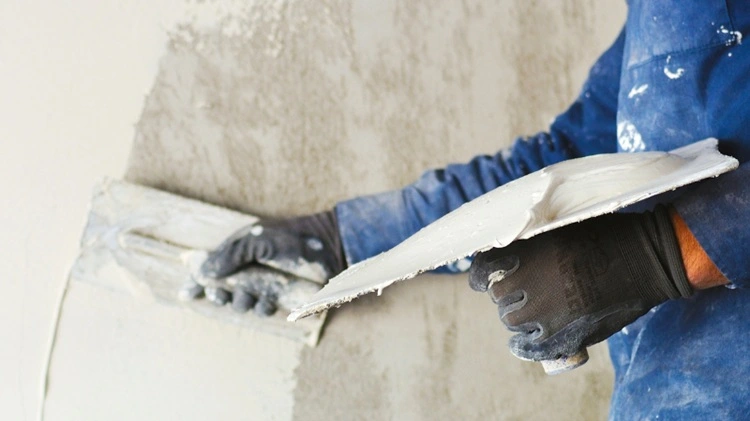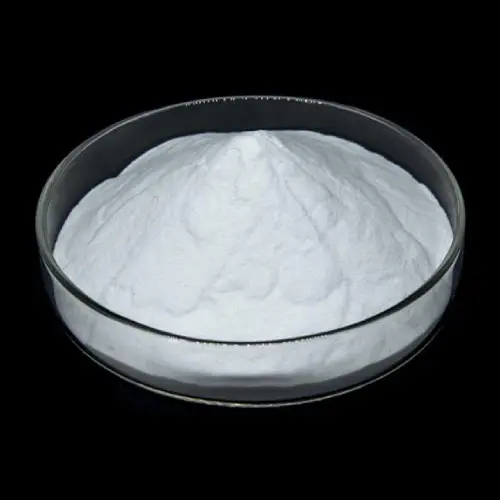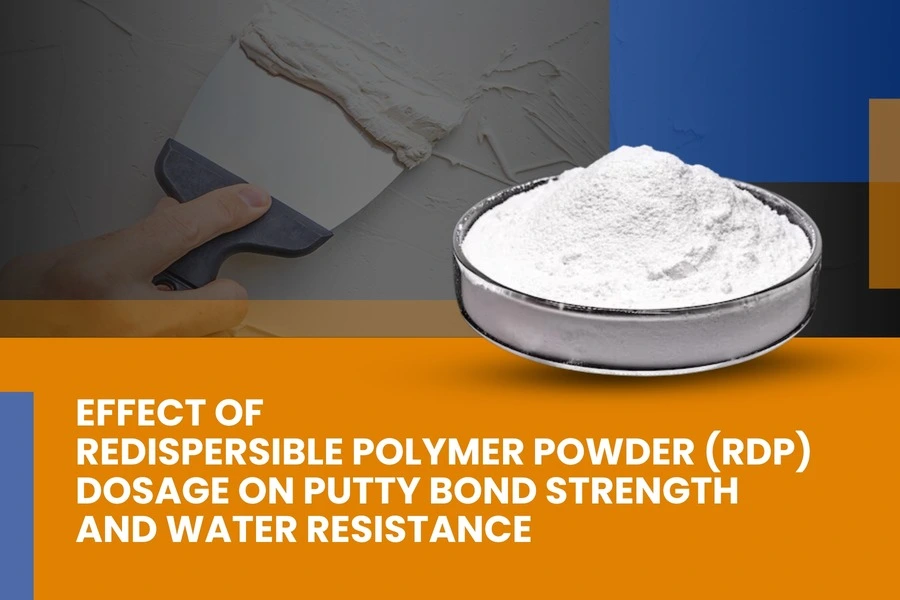In the building industry today, the search for long-lasting, flexible, and water-resistant finishes has resulted in most wall putty formulations using Redispersible Polymer Powder (RDP).
RDP is a fine powder form of a polymer emulsion that has been spray-dried, and through its use in putty, surfaces will provide improved adhesion, flexibility, and water-resistant properties.
However, the amount of Redispersible Polymer Powder (RDP) included in the putty mix is significant because it will affect the properties discussed previously.
Table of Contents
What is Redispersible Polymer Powder (RDP)?
RDP is a common dry mix additive that is unique because it is a dry powder that, when mixed with water, it will dry to form a continuous polymer film.
This film acts as a binder between layers, influencing the overall cohesive strength of the putty and affecting the adhesion between the putty and substrates.
The polymer particles in RDP help form a three-dimensional network in the putty that provides elasticity and absorbs and distributes stress to prevent cracks from forming in time.
RDP in Improving Putty Performance
1. Bond Strength Improvement
It is vital to form a strong bond between the putty and the substrate for the long-term durability of wall finishes. Research has demonstrated that increasing the amount of RDP used in putty fortunes significantly increases the bond strength.
For example, one study found that with 4.0% RDP dosage the bond strength increased by 66.7%, respectively, 2.5 MPa and 1.5 MPa with no RDP. Which is believed to occur because the RDP allows the formation of a continuous polymer film that sticks well to the substrate reducing risk of delamination.
2. Enhanced Water Resistance
Water resistance is a key characteristic of putty and especially for putty used in wet locations or installed areas of potential water contact.
RDP creates a discontinuous hydrophobic barrier enhancing the putty’s water resistance. This barrier creates a barrier to water penetration and reduces the putty’s porosity reducing the risk of mold growth and degradation.
3) Flexibility / Crack Resistance
Walls can experience significant stress due to thermal expansion and contraction causing it to crack. When used correctly RDP will increase the putty’s flexibility allowing it to accommodate these stresses without cracking.
Additionally, the polymer network created in the putty will help with absorbing and distributing stress delaying cracking and providing a long lasting finish.
Optimal Dosage of RDP in Putty Formulations
The dosage of RDP directly affects the performance characteristics of the putty, and while a higher dosage may always lead to better performance, it may increase cost. So, it is necessary to determine the optimal dosage that provides performance without sacrificing cost value.
Recommended Dosage Range
Generally, the industry guidelines recommend the addition of RDP should be 2-10% of total dry mix weight. This typically provides enough dosage so that it can make an appreciable difference in adhesion, flexibility, and water resistance; without compromising workability and overall value.
Impacts of Variations in Dosage
Low Dosage (2-4%) performs well for adhesion and water resistance improvements, but is likely best suited to regular performance where performance is adequate.
Medium Dosage (5-7%) will improve overall performance adequately, and is likely best suited to applied products that may be subjected to some level of moisture and/or shear stress, and will yield more durable and reliable results.
High Dosage (8-10%) will yield the best performance, and is applicable to high stress applications and to applications and environments with high humidity. This provides the best environment for both the applicator and the materials to enable the best adhesion and durability outcomes.
Being careful to not exceed the high dosage will help ensure optimal putty consistency, and will help control the cost associated to the performance improvements.
Synergistic Effects with Other Additives
Several additional materials can enhance putty performance in combination with redispersible polymer powders (RDP). For example, thickeners can enhance the workability and spreadability of a putty for ease of application and control.
Antifreeze agents will also assist putty application in cooler temperatures or adverse conditions to continue working.
Water reducers will help limit water loss, providing enough moisture for the cement particles to hydrate as if conventionally curing to form a strong putty thickness.

Practical Considerations for Formulation
A few practical considerations must be recognized to enable optimal putty performance when using Redispersible Polymer Powder (RDP) are as such:
1. Compatibility with Substrates: RDP must be specifically compatible with the type of substrate you will be applying the putty to. This will include many different types of substrate materials, including concrete, masonry, or even plaster. Ensuring substrate compatibility achieves adhesion and durability.
2. Environmental Conditions: The environmental circumstances in which the putty will be used are a very important consideration regarding RDP. Things like humidity, temperature change, and the potential for water exposure all affect the putty and its ability to perform long-term.
3. Method of Application: The application method is another important area that greatly needs to be considered. Whether application be by trowel, spray, or other approach, the formulation should allow for ease of application, while still achieving the desired aesthetic finish.
This helps provide an application that is smooth, but also efficient, and will provide the user with what they are looking for.
4. Curing Conditions: The curing process is important to ensure that the putty is able to achieve optimum performance. Curing must take place in the right conditions to develop a polymer film, which is critical if you hope to develop optimum properties such as strength and adhesion. These properties are important in determining the longevity of the putty.
When considering these factors closely, the expectations of performance and durability of the putty with RDP, can improve significantly.

Conclusion
Incorporating Redispersible Polymer Powder in wall putty formulations improves the bond strength, water resistance, and flexibility of the putty.
Considering the amount of RDP to use and how RDP interacts with other additives can help manufacturers develop higher-performing putty for today’s construction requirements.
Knowing about the use of RDP and the amount to use will also be important in developing putty formulations that have durability and aesthetics for longevity.


